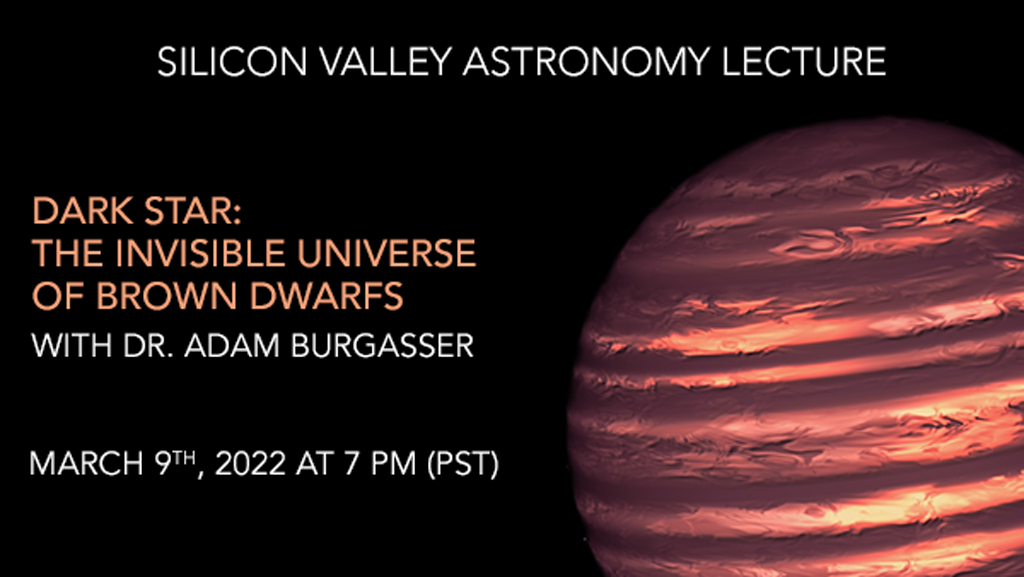Dark Star: The Invisible Universe of Brown Dwarfs

Tags: Astronomy, Silicon Valley Astronomy Lecture Series
Time: Wednesday, Mar 09, 2022 -
Location: Online
On Wednesday, Mar. 9th, 2022 at 7 pm (PST), Dr. Adam Burgasser (University of California, San Diego) will give a free, illustrated, non-technical lecture entitled:
“Dark Star: The Invisible Universe of Brown Dwarfs"
Online on YouTube: http://www.youtube.com/SVAstronomyLectures
[if you go to this address the evening of the talk you will see and be able to participate in the live event; we will also make a recording]
The talk is part of the Silicon Valley Astronomy Lecture Series (through Foothill College), now in its 22nd year.
Normal stars, like our Sun, shine because they undergo nuclear fusion, turning hydrogen into helium and converting matter into radiation. But what if a star wasn't able to fuse? What would such a "dud" look like? These were purely theoretical question until the 1990s, when the first examples of non-fusing stars, or brown dwarfs, were discovered. Today, many thousands of such objects are known, spanning a wide range of temperatures and masses, and they occupy a unique niche of at the intersection of stars and exoplanets. In this presentation, Prof. Burgasser will introduce the science of brown dwarfs, discuss how they were and continue to be discovered, highlight some of their exceptional properties, and describe how this (mostly) invisible population may provide clues to the early formation and evolutionary history of the Milky Way.
Adam Burgasser is a professor of Physics at UC San Diego, and an astrophysicist who studies the coldest stars, brown dwarfs, and extrasolar planets. Prof. Burgasser defined the “T spectral class” of brown dwarfs as a graduate student; and is one of the co-discoverers of the TRAPPIST-1 exoplanetary system, a system of seven Earth-sized planets orbiting an object at boundary of the star/brown dwarf divide. He has authored over 600 publications, including work in astrophysics, physics education, and equity, diversity, and inclusion in STEM. Prof. Burgasser is currently a Vice-President of the American Astronomical Society and has been a Fulbright scholar.
The lecture is co-sponsored by:
- The Foothill College Science, Tech, Engineering & Math Division
- The SETI Institute
- The Astronomical Society of the Pacific
- The University of California Observatories (including Lick Observatory).
Past lectures in the series can also be found on YouTube at: http://youtube.com/svastronomylectures and as audio podcasts at: https://www.buzzsprout.com/1805595
